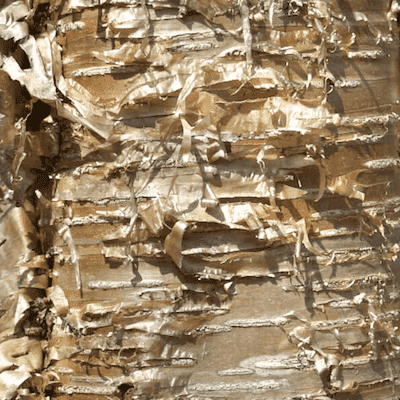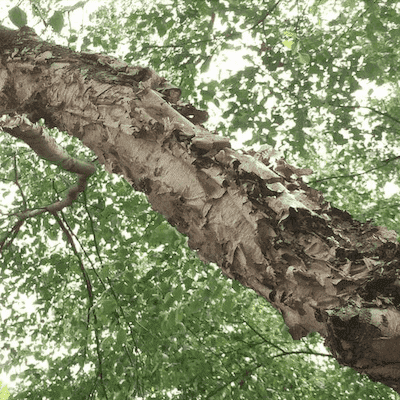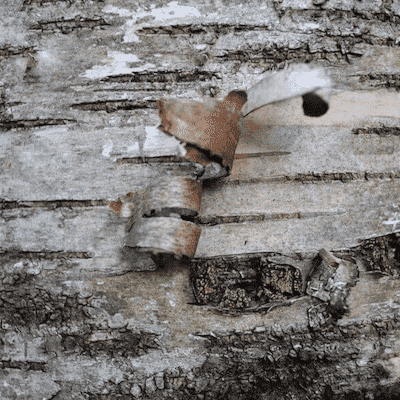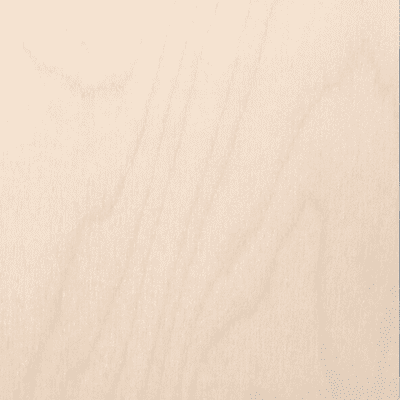Softwoods
A forest is a carbon bank, every tree a deposit.
Birch trees are more than just a source of high-quality timber—they play a crucial role in ecosystems, provide economic value, and offer unique products like syrup and veneer. Below are some key benefits of birch trees:
Birch trees provide economic, environmental, and ecological benefits, making them a highly valuable resource. Their contribution to timber production, soil health, wildlife habitats, and carbon sequestration underscores their importance in sustainable forestry and conservation efforts.
Yellow birch (Betula alleghaniensis) is the most valuable birch species and is becoming increasingly rare in its native range across eastern Canada and the northeastern United States. Unlike paper birch, which is classified as a softwood, yellow birch is a true hardwood. Its tighter grain structure makes it stronger, denser, and more durable, making it highly desirable for woodworking and construction.
While paper birch (Betula papyrifera) has limited commercial timber value, it remains a highly popular choice for landscaping. Its iconic white, peeling bark contrasts beautifully with its dark green foliage, making it the number one landscape tree for more than 50 years. In Europe, where pulpwood shortages and increasing demand for wood pellets challenge traditional forestry, paper birch is cultivated in low-grade plantations to supply the paper and bioenergy industries.
Native to Eastern North America, yellow birch dominates the hardwood forests of Quebec, Canada. It thrives alongside white pine as far north as Hudson Bay but grows slowly due to long winters and short, cool summers. The tree is easily recognized by its distinctive papery, golden-brown bark, which peels in thin strips.
Due to its rarity, high-quality yellow birch lumber is now more expensive than some imported tropical hardwoods. Large, old-growth specimens have become exceedingly scarce, increasing the demand for sustainable cultivation and responsible forestry management.
Native growing areas are concentrated in Eastern Canada and the northwest United States, with the highest concentration in the province of Quebec. Although native to Eastern North America, these trees may also be grown in the microclimate areas of the Western States and Canada, principally the coastal interiors of British Columbia and Washington State.
Yellow birch wood is heavy, strong, close-grained, even textured, and shows a wide color variation, from reddish brown to creamy white. It is used for furniture, cabinetry, charcoal, pulp, interior finish, veneer, tool handles, boxes, woodenware, and interior doors. Yellow birch wood can be stained and takes a high polish. Yellow birch wood is one of the principal hardwoods used in the distillation of wood alcohol, acetate of lime, charcoal, tar, and oils.
The following comments were collected from a national wood products discussion forum using Yellow Birch wood primarily in the United States.
Yellow birch hardwood flooring is a happy medium between the hardness of hard maple, and the stability of red oak. It’s got the close grain pattern similar to Hard Maple, slightly softer, and with more of a golden color spectrum. Yet, it approaches the stability of red oak. So, if you’re looking for a natural floor that is akin to a maple, with a level of easy workability akin to a red oak, yellow birch may be a hardwood floor species to look into. I personally really like the golden tones of this species, perfect for bringing a bit of brightness to a space.
We sell a lot of birch hardwood at our flooring business here in New York State. It’s quite popular because of its durability and unique color variations. Most of our planking is the standard 3 and 4-inch widths in 7 and 6-foot lengths. We often get requests for a wider plank, and I sure wish we could offer it because we could charge twice or three times standard planking for 10 and 12-inch sizes, but we just can’t get it. Year after year we see the availability of planking sizes get smaller and smaller while the prices for birch wood continue to rise.
Jerry Ashcroft’s family has been farming for more than 200 years in a small town near the Quebec border. “All the farms around us have small woodlots for firewood and timber” says Mr. Ashcroft, we cut timber from our 50 acres every 5 years to supplement our farm income.” This year, I wish we had more birch; demand for birch wood has skyrocketed since the province of Quebec laid off most of its forest workers due to the low number of harvestable trees.
A friend of mine suggested I consider tapping my birch trees for syrup just like they do when they make Maple Syrup. It turns out you can make more money from Birch Syrup than maple - a delicacy I’m told. Syrup from birch trees – who knew!
My wife and I are considering starting a tree plantation on our property here in Ohio. Others in the area have done a similar thing planting Christmas trees, pines and poplars. We were thinking of planting hardwoods just because they are worth more and there doesn’t seem to be many hardwood tree plantations around. After a little research, we found out that we could make quite a lot of money planting birch trees mainly because of the current shortage and its high commercial value. We think we would be ahead of the curve with this because we can’t seem to find nurseries that sell yellow birch; we would have to contract them to grow these for us.”
Paper birch trees are known as the Canadian tree because of its natural range across the entire country. Paper Birch trees can be found growing in every province and territory. They also grow in some northern parts of the United States, particularly around the Great Lakes.
Paper birch trees, also known as “Canoe Birch”, hold a significant place in history and culture. Indigenous peoples crafted canoes from birch bark centuries ago, leveraging its lightweight yet durable qualities. These canoes became so reliable and practical that early explorers and fur traders abandoned their rafts in favor of birch bark canoes as their primary mode of waterway transportation. The historical significance of these trees extends beyond their use in crafting canoes, as they continue to serve as a valuable resource today.
The unique properties of birch bark made it a cornerstone material for Indigenous peoples of North America. The bark’s water-resistant quality and ability to be easily molded into a lightweight structure provided a reliable solution for navigating rivers and lakes. This practicality was quickly adopted by fur traders and early settlers, solidifying the canoe birch’s place in history as a symbol of ingenuity and resourcefulness.
Beyond its historical and modern uses, the paper birch plays an essential ecological role. Its roots help stabilize soil, reducing erosion in riparian areas, while its leaves improve soil quality by contributing organic matter as they decompose. Additionally, paper birch forests contribute to carbon sequestration, helping combat climate change by absorbing and storing atmospheric carbon dioxide.
As one of the most iconic trees in North America, paper birch continues to inspire innovation. Modern efforts to sustainably manage birch forests ensure its continued use in industries ranging from construction to environmental restoration. With growing interest in renewable resources and sustainable practices, the versatile paper birch tree remains a symbol of adaptability and enduring value.
Paper birch, with its distinctive bark and versatile wood, is a staple of Canadian forestry. Its wood is valued for various applications, from everyday items like tongue depressors and toothpicks to large-scale uses such as biomass, wood pellets, and firewood. Paper birch is also widely used in the manufacture of Class 2 veneer, often utilized for plywood and linoleum underlay in flooring.
Thanks to its rapid growth rate—much faster than Yellow Birch—Paper Birch can be harvested on 20- to 30-year cycles. Tree farmers employ staggered planting and intermittent thinning, which allows for sustainable and regenerative resource management. This method ensures a perpetual income stream, with birch tree farmers earning between $15,000 and $25,000 per acre from biomass plantations.
When people think of tree syrup, the iconic maple syrup typically comes to mind. However, birch syrup offers a lucrative and untapped opportunity for tree farmers. While still a fledgling industry, birch syrup production is gaining attention as the price of maple syrup skyrockets. Maple syrup now fetches about $3,725 per barrel—60 times more than a barrel of oil—while birch syrup sells for approximately $500 per barrel. Despite the price difference, plantation owners producing birch syrup can earn more per acre than those growing birch trees for biomass.
Birch syrup offers a unique alternative to traditional maple syrup. While it comes at a higher price, its rich, complex flavor profile and versatility in both savory and sweet applications make it a worthwhile investment for those who enjoy natural sweeteners. For tree farmers, birch syrup represents an exciting opportunity to diversify and capitalize on a growing market.
Birch tree plantations are cultivated and managed areas dedicated to growing birch trees for timber, ecological restoration, and conservation. They offer multiple environmental and economic benefits. Below are key insights into establishing and managing birch plantations:
With proper management practices, birch tree plantations can serve as a sustainable tool for timber production, ecological restoration, and environmental preservation.
To address the slower growth rates in traditional plantations, Tree Plantation has introduced an innovative method: **Crop Circle Tree Plantations.** Instead of planting birch trees in standard rows, we grow them in large spirals. This geometric design creates an energy field that enhances nutrient uptake and accelerates tree growth, reducing the time to harvest. Additionally, this method allows for multi-species forests, which create a balanced ecosystem that is more resilient to pests and diseases compared to monoculture plantations.
Traditional birch plantations often follow a monoculture model, where only one species is planted. While straightforward, this approach leaves forests vulnerable to pests and disease outbreaks. A more sustainable and productive alternative is to integrate multiple tree species within the plantation.
For example:
A balanced plantation on a 10-acre site could include 4,000 yellow birch trees, 4,000 sugar maple trees, and 4,000 white pine trees. This combination promotes a healthier ecosystem, diversifies income streams, and ensures long-term sustainability.
Tree Plantation specializes in growing tall, root-developed birch seedlings to give farmers a "fast start" advantage. Our seedlings average 10 feet in height, are nearly branch-free, and have a 2-inch caliper. These features ensure:
Integrating species like birch, maple, and pine trees creates a balanced, productive forest ecosystem. This approach not only improves biodiversity but also enhances profitability through diversified timber and syrup production. Farmers can maximize revenue while contributing to environmental conservation and climate change mitigation.
From maple to oak, hardwoods whisper of centuries past, their slow growth a testament to patience and value over time.
Partner with us in a land management project to repurpose agricultural lands into appreciating tree assets. We have partnered with growingtogive.org, a 501c3 nonprofit, to create tree planting partnerships with land donors.
We have partnered with growingtogive.org, a Washington State nonprofit to create a land and tree partnership program that repurposes agricultural land into appreciating tree assets.
The program utilizes privately owned land to plant trees that would benefit both the landowner and the environment.
If you have 100 acres or more of flat, fallow farmland and would like to plant trees, then we would like to talk to you. There are no costs to enter the program. You own the land; you own the trees we plant for free and there are no restrictions; you can sell or transfer the land with the trees anytime.
Copyright © All rights reserved Tree Plantation





